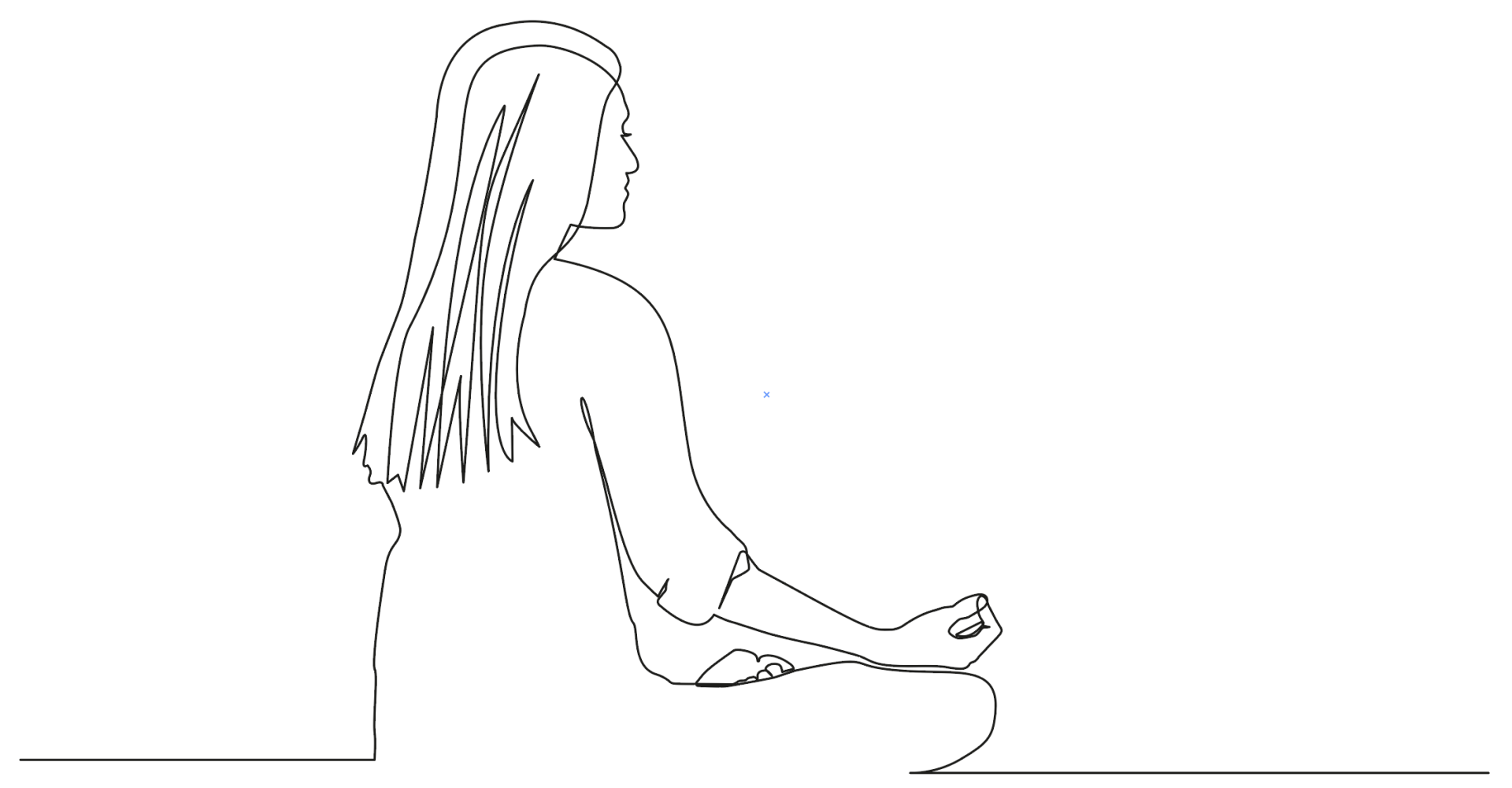Read about our new safety and health procedures here.
We are permanently closing 12/22/23.
Please schedule any services prior to that date.
We will have $59 60-minute floats and $69 90-minute floats until 12/22/23
Blog
The Tranquil Waters Blog

14 Aug, 2022
The feeling of getting off a long plane ride, worn out from the traveling you’ve already done, can sometimes stifle the excitement for the trip ahead. For especially long or arduous journeys, entire days can be lost or wasted trying to deal with jet lag and catch up on sleep. The drowsiness and exhaustion can certainly impact how you engage with new environments, and it can lead to seeing the world as duller and less interesting. It can feel like you need a reset, much like when a computer gets overworked – simply rebooting it can fix a lot of problems, and the same is true for us. Starting your travels with a float can be just the reset you need, and it can help in a big way with alleviating symptoms of jet lag. It also enhances your senses, letting you take in your new surroundings in a fresh and exciting way. One of the most enticing benefits that a float tank can provide to someone traveling is the reduced stress one feels after a session. For many people, traveling can be a less-than-ideal situation; it often involves long days, uncomfortable transportation, overstimulation, and an ever-present fear that something will go wrong. We have a romantic vision of vacations as a relaxing respite from our normal lives, but the reality is that they're often highly stressful experiences. Fortunately, floating has been shown to specifically alleviate stress and anxiety, and it’s no wonder that this is one of the most commonly cited reasons that people come in to float. By slowing down the production of cortisol (one of our stress hormones), floating helps to regulate our overall stress levels. Hopping into a tank when you arrive at a new destination can help strip away that travel stress, and prevent it from negatively impacting the first days of your trip. Even just an hour float session can rejuvenate your system, giving you an energy recharge for your upcoming explorations. The effects of floating can last multiple days, even up to a week, allowing you to feel ready to go for your whole adventure. Surplus energy is always welcome while traveling, during which so often the goal is to go-go-go and see as much as possible. This kind of non-stop pace gets tiring very quickly, and the exhaustion associated with travel is a big reason some people don’t take any long trips at all. However, by starting the journey with a float and letting your body relax, exploring immediately becomes less draining and more exhilarating. Fighting off the effects of jet lag is a tremendous boon for any travels, but that’s not the only way floating can improve travels – and arguably it’s not even the coolest benefit. Post-float, there is a unique opportunity to experience the world in a different headspace. Removing all stimuli allows the brain to rest and readjust, which changes how we perceive the world once we re-engage with it. After floating, lights are more vibrant, sounds have a new tone to them, and food tastes better. These heightened senses can make any plans you have that much more enjoyable. New and exciting restaurants become even more delicious, art galleries grow in the way they provoke thoughts, and landscapes increase in intensity as the colors saturate. Additionally, at the same time that your cortisol levels are dropping, your production of dopamine is increasing, providing a naturally better mood. Being in this headspace can have a tremendous influence on all of your experiences: feeling fresh, relaxed, ready to conquer the new adventures that lie ahead of you. Floating can also increase the quantity and quality of your sleep, helping to push past that weird feeling of sleeping on an unfamiliar bed that makes it more difficult for many of us to sleep well away from home. Floatation therapy has benefits that can help improve our quality of life in so many areas, and that includes travel. The good news is that it’s easier than ever to find a good place to float – in the past decade float centers have been opening at a swift pace in cities all across the globe. Starting a trip with a float could just be the secret to getting the absolute most our of the rest of your vacation – and it’s not the worst way to unwind and process your experiences upon your return.

By float therapy
•
14 May, 2022
“The tank is a general-purpose tool, not a design for something in particular. It is nothing and it is a powerful instrument for change. It is an environment for learning about oneself, in whatever way one wishes. It does not tell us what to do… we trust in the inherent capacity of the individual to discover what is best for themselves.” -Glenn and Lee Perry, Floating in Quiet Darkness
(manufacturers of the first commercial float tanks) “Who are you? ” -Lewis Carroll, Alice’s Adventures in Wonderland
(asked by the Caterpillar)

12 Apr, 2022
Creativity and convergence If humanity defines itself by anything, it is by our capacities to think critically and to adapt through our creative abilities. Although the critical thinking part gets a lot of attention, creativity is at the core of our being and is one of the main driving forces of productivity. Unfortunately, society values this productive output so much that it’s often willing to sacrifice our health and sanity in the short term to get there. This can cause a perverse cycle where our health suffers, so our creative force takes a serious dip, and our productivity is brought along as an unwilling and unwitting passenger. The intimate relationship between self-care, creativity, and productivity is both fascinating and often frustratingly elusive to balance in our lives. Sometimes we "just get it" and everything seems to flow effortlessly from our intentions, through our actions, into being. However, when our creative fuel is running low our outlook can suddenly change, and lots of the creative tasks that would normally come easily to us end up being difficult to manage. This can manifest itself in things like writer’s block, listlessness, or even chronically cleaning the same spot in your kitchen over and over again in the hopes that you’ll somehow metaphorically wipe away your current mental obstacles.

20 Mar, 2022
Imagine yourself - who are you and where are you REALLY going? What do you truly know about yourself? You've found your parking spot, stop to take a few conscious breaths after turning off your car, and step out. You take the short walk to our float center, and as you open the door you're greeted by our welcoming staff and feel instantly relaxed and at home. You sit down in a comfortable chair, wait for your room to be ready, and ponder on how floating has helped you connect with yourself. As you reflect on the familiar sensation of letting go into your private sea, the question naturally arises: what else can floating help with? Many people float to find their baseline - whether that be for general relaxation, "me" time (away from kids, partners, work, friends and family), basic physical recovery, or even just paying off some sleep debt. For others, though, floating as a practice has more of a pointed goal to it – something specific that you’re looking to achieve, whether it be physical, emotional, intellectual, or spiritual. Since one of the most fascinating things about floating is how versatile it can be, and how it appeals to people in so many different walks of life, we wanted to run through some different ways floating is used for self-improvement. Physical In the physical realm, goals could be performance oriented: improving running times, training for an event or marathon, or improving precision skills required for something like disc golf. Several NFL, NBA, and MLB teams use floating as part of an action/recovery plan, along with other organizations such as the Australian Institute of Sport and the UFC Performance Institute Shanghai. There have been a host of studies on the effectiveness of floating for this kind of training, from tennis players pushing past skill plateaus, to improved marksmanship in archery and rifle shooting, to shortened recovery times and less muscle soreness for heavy physical training. Incorporating floating into your training routine can help with injury prevention both before and during an event, and has even been shown to speed up reaction time. Improving as an athlete, or in your physical performance, is only one of many acute goals that regular floaters come in for. Other areas for development in conjunction with floating include: - Spinal decompression - Relief from arthritis and fibromyalgia - Stretching (something called "Floga") - Swifter recovery from surgery/injuries - Aiding in body work and physical therapy - Reducing high blood pressure - Improving quality of sleep

By float therapy
•
07 Feb, 2022
“What? Sorry, can you say that again – I was distracted.” This is a phrase that’s all-too-commonly uttered these days. However, it seems apparent that it’s less a sign of personal failure and more an indication that the technological world we’re surrounded by is, indeed, incredibly distracting. Some of this is accidental, but much of it is purposefully designed by businesses, government, and individuals to grab our attention and keep it for as long as possible. Unfortunately, this sensory assault takes its toll on us human beings, and being distracted is a symptom of the much larger problems of endemic stress and anxiety that plague so much of the population. It’s no surprise that this environment has led to an increase in popularity for meditation, mindfulness, and activities like floating. Floating lets us escape all of these distractions for a time, to give your body and mind time to rest, process, and heal. When you come out of a float tank, the world often seems more vibrant. Colors appear brighter, the air after a fresh rain smells nicer, and good food tastes even more delicious. This heightened awareness isn’t just limited to your normal senses – many floaters report feeling more connection and empathy with the people around them. Often this is directed towards close friends or loved ones, but we’ve heard plenty of stories about small acts of kindness towards even total strangers post-float. There is a common saying, phrased in many different ways through the years, that taking care of yourself and loving yourself are necessary preconditions for taking care of, and loving, others. Like an emotional version of the oxygen masks that drop down in a plane during an emergency: you make sure that you’re taken care of before taking care of those around you. Floating is a great example, and as any experienced floater will tell you, many of the most significant benefits of floating extend past your time spent in the tank, and beyond just making you feel better. As a result, although it’s a practice that’s essentially about being completely alone, floating can actually be a wonderful experience for bonding and deepening connections with others. It’s very common for friends to come in together so that they can relax and hang out afterwards. Many couples also find that floating is a wonderful way to start off a romantic weekend together, or even just a casual date night. Taking time to process the thoughts that are always whirling through your head, and to let go of the stress from your regular obligations, is a perfect way to free up more space in your awareness and attention for those things (and people) that are right in front of you. There is an openness and joy that comes along with being both relaxed and present. Some people might refer to it as being in a kind of flow state, where conversations and interactions just seem to click into place. This is a state where if something goes wrong, it’s laughed away rather than dwelled upon, and where normal distractions breeze by completely unnoticed and unheeded. Plus, if you’re grabbing lunch or dinner afterwards, food really does taste amazing (which certainly doesn’t hurt that magical feeling you have post-float). All of these effects are more than just collected anecdotes – research on floatation consistently shows reduced stress and anxiety, along with increased feelings of serenity and well-being. Several studies have also shown that creativity increases post-float, which could certainly be a part of why spending time with others right after a float can be so enjoyable. Feelings of being more present and aware are also consistently reported by float participants, and there are even some pilot studies showing improvement in attention and quality of life for those diagnosed with ADHD. The unfortunate fact is that our brains are hardwired to be on alert for threats in our environment, and the modern world that surrounds us – with its loud noises, flashing lights, ever-present screens, and bustling crowds – keeps us pretty much constantly on edge. Being so mentally preoccupied all the time, it’s no wonder that it’s often hard to even focus on the person right across the table from you, and what they’re saying. Whatever way you accomplish it, it’s important to cultivate the ability to tune out the ever-present distractions that bombard us (both those from the real world, and the ones that come from your own mental chatter). We, of course, recommend floating as the ideal tool, and whether you come in alone, with friends, or with your romantic partner, we’re sure that you’ll find the distractions melt away as your attention resurfaces.

17 Jan, 2022
As you consider what changes you want to make in your life for the new year, it’s worth also spending some time thinking about how you are going to make sure that you actually follow through with them. There are people who joke that their main New Year’s resolution is to not break their New Year’s resolutions – and there is actually a good amount of wisdom in that quip. Especially for those of us who don’t have the best track record of following through with our well-intentioned goals, it’s important to engage in activities and behaviors that can help us on our journey. There are many tools and tricks out there to help you keep your New Year’s resolutions, from goal journals, to accountability apps, to prescribed morning routines. These are all designed to help you overcome one of the frustrating realities of being human: we are creatures of habit. For the most part, this is a good thing – we have countless routines that allow us to live our lives and get through our days consistently and safely. There are also, of course, those adopted habits that we’d like to change, or eliminate altogether. One of the practices that is especially useful in breaking bad habits and fostering new behaviors is floatation therapy. In fact, Dr. John Lilly, the inventor of the float tanks (and who would have been 107 this month) wrote several books about using the float tanks to take control of your habits, or as he would say, “to reprogram yourself.” Floating facilitates self-reflection & visualization, it’s incredibly effective at reducing stress & anxiety, and it provides you with all-important alone time. Consistent reflection on your goals has been shown, time and again, to predict your ultimate success in achieving them. Reflecting, not just on the changes that you want to make in your life but the reasons you want to make those changes, is incredibly helpful in making them a reality. In the same vein, taking the time to visualize going through the steps to fulfill your resolutions better prepares you for accomplishing them in the real world when the time comes. The float tank is an ideal place for both self-reflection and visualization, and those are actually two of the reasons that regular floaters commonly cite for coming in. Without any outside distractions, and perfectly comfortable physically, your mind can direct its attention wherever you’d like – for instance, on your New Year’s promises to yourself. Without starting to form these strong associations with your goals, it’s all too easy for your old habits to slip into their familiar places, like an old man slipping back into his favorite chair. As numerous studies have shown, floating is also an incredible tool for relieving anxiety, as well as depression – which can both be huge obstacles in the way of us achieving our goals. With so many things in the modern world demanding our time and attention it’s not surprising that nearly everyone is operating at levels of heightened stress, hampering our efforts towards making real change. Taking purposeful time out of the demands of everyday life, even for something as simple as 15 minutes of silent breathing, has been shown to help us manage our stress better. This in turn leads to improved focus, more self control, lower blood pressure, and a range of other benefits. Research continues to show us how important it is to disconnect, and floating is the perfect way to do that. It’s tempting to think that we will, by simply declaring our resolutions, be able to effortlessly follow through with them – however, adopting new habits (and eliminating old ones) is most often a more challenging task than that. It’s important to use all the tools at your disposal to help you out, rather than just choosing one (or, as is often the case, none). Try journaling, experiment with goal tracking apps, try starting your day off with some new activities, and, of course, we recommend scheduling regular time to float.

07 Nov, 2021
In many ways, our culture has fostered an unhealthy relationship with time spent alone. Even the words that we use to describe alone time are often steeped in some kind of negative connotation. Solitude. Seclusion. Withdrawal. Loneliness. Loneliness is especially telling: the etymology of the word is simply in the act of being alone, but the modern meaning and most common definitions refer to it as an unpleasant emotional state in which you desire the company of others, but for one reason or another can’t satisfy that desire. When we’re thinking of things that we want to do next Friday night, being “lonely” rarely finds its way to the top of the list. Fortunately, our relationship to loneliness is changing, and many of these terms and notions are being gradually replaced (or at least supplemented) with ideas that aren’t as negative: me-time, down-time, self-care, treating yourself, and decompressing. As our technology and culture have pushed us to be constantly connected to other people (along with their opinions and demands), we’ve seen an increase in research and general attention to the benefits that spending time alone can offer us. Let’s take a moment to define what we mean by being “alone.” At its root, being alone is spending time by yourself, without interacting with other people. So, if you’re talking on the phone with someone, chatting online, or reading & responding to social media, we shouldn’t really call that “alone time.” Another way to think of being alone is spending time with your own thoughts. Even watching a show or a movie is perhaps not truly “alone time.” There are a fair amount of studies that back this up, showing that when we’re watching media, especially serial TV shows, we overestimate how many relationships we have – our simple human brains have a hard time distinguishing between spending time with two-dimensional actors and three-dimensional friends. The act of truly being alone – where your own internal monologue isn’t interrupted by the thoughts or actions of others – isn’t all that common for most people in their daily, or even weekly, lives. This is a shame, given the many benefits that often come with carving out at least a little time to be completely by yourself. These include:
emotional benefits (such as increased contentment, lowered anxiety, and a reduced chance of burnout)
physical benefits (like more awareness of physical stress and increased energy)
social benefits (counterintuitively, studies show that spending more time alone allows us to be more attentive to those around us, more enjoyable & engaging, and even better romantic partners)
hair growth benefits (well… maybe not… but when you’re alone, who cares about your hair anyway?) These benefits of alone time parallel those that modern research is finding from meditation & mindfulness, as well as floating (which is, of course, one of our favorite ways to spend alone time). Not only is the mental stress from socializing removed during a float, the actual physical stresses of the world are lifted as well. The cognitive load from observing your environment, regulating your temperature, and even just constantly holding yourself up against gravity is freed up in a float tank. This reduced cognitive load, combined with an extremely comfortable and relaxing environment, allows your brain to spend time reflecting, processing, and assessing pretty much everything – from past events & future obligations, to relationships, to muscle tension, to coiffures. Although there are many benefits of actively engaging your thoughts, there is definitely something to be said for making the transition from engaging, to observing, and finally to letting go of your internal monologue completely. If you’ve practiced meditation (of almost any form), you’ll certainly recognize this process. Likewise, if you’ve spent any amount of time in a float tank, this will no doubt all sound very familiar. Just as our bodies need both exercise and rest, our minds need time for directed reflection as well as time to disengage and not think about anything at all. It’s an easy concept to grasp, but, just like going to the gym, it’s also easy to push aside when the demands of daily life rear their heads. Just as the terminology around loneliness is evolving, it would be excellent to see progress in the overall relationship we have with being alone. Next time you feel overwhelmed with everything you have to get done, you should consider giving yourself a time out (for at least 15 minutes) to let your mind relax for a moment. Next time you find yourself messaging on social media, think about writing down some notes on paper to yourself instead. Next time you have some free time and you’re thinking about what you’d like to do with it, you should perhaps consider doing nothing at all.

20 Oct, 2021
You’ve probably heard of our fight or flight response – when we’re presented with stressful or threatening situations (like being chased by a hippopotamus), our body’s autonomic nervous system responds by preparing for action. Our heart rate increases, our breathing picks up, and blood flows from our core out to our limbs (along with a lot of other changes, all focused on helping us get ready to defend ourselves or to get out of there as swiftly as possible). In addition to this well known reaction to stressors, we have another autonomic response you may not have heard of, which is pretty much the polar opposite of fight or flight: the relaxation response. This is also referred to as the “rest and digest” response, and it takes over when we feel safe and secure. Our breathing and heart rate slow down, our circulation evens out, our digestive system becomes more active, and we’re more likely to become sexually aroused. While our fight or flight serves us best in dangerous situations, our rest and digest response is useful for all those times when we’re NOT being threatened, and it makes more sense for our body to focus on taking care of itself. This allows us to store up energy, heal and recover, and even attempt to produce future generations. Both autonomic responses are incredibly useful to our survival, helping us to get through tough short-term situations and make sure that we have the resources and time to prepare for whatever may be coming in the future. Unfortunately for modern humans, we’re often under constant stress (even if it’s not as immediately threatening as being chased by a hippo). Things like being cut off in traffic, being chewed out by our boss, or being woken up by a loud car in the middle of the night can make our fight or flight response kick in. Even before the global pandemic, stress levels were especially high for people living in cities, where all of the motion, noise, and interaction creates a more threatening environment for our psyche. It’s safe to say that many of us were going through our days in a state of constant and chronic stress, and having to deal with the Covid-19 virus and all of its impacts has certainly not helped. This isn’t an all-or-none situation: there is a large gradient of stress that people experience in everyday life and a large diversity in the effects of that stress. Regardless of both the exact causes and levels of stress, finding ways to unwind, de-stress, and cue the relaxation response is increasingly important for all of us. In fact, when the term Relaxation Response was first coined by Herbert Benson, it was presented alongside a protocol for practicing and eliciting it in yourself. Reading through his suggested steps, it may sound very similar to engaging in a simple meditative practice. You wouldn’t be the first to make that comparison – in fact Dr. Benson is often credited with familiarizing a Western audience with meditation, essentially through rebranding it as the Relaxation Effect and conducting studies on its measurable impacts. With that in mind, it’s not surprising at all that numerous studies have found that floating in a float tank seems to bring on both the relaxation effect and its associated benefits. In fact, floating is often described outside the scientific community as “training wheels for meditation,” demonstrating that outside the lab, people have also been noticing the similarities between floating and the relaxation response for things like reducing stress, improving mood, and increasing focus. The environment of a float tank is pretty much the perfect place to help turn off our nearly ever-present stress response (regardless of its current severity) and to help us to engage with our relaxation response. All of the examples above for triggering our fight or flight response involve things like loud noises, surprises, uncomfortable social interactions, hippopotamuses… all of which are notably absent in a float tank. In fact, the lights, noises, shocks, and demands on your system are about as reduced as you can possibly get in a float tank. Even the burden on your brain of trying to balance on these two awkward pillars we call legs and walk around the world without bumping into anyone (or anything) is eliminated. So, the next time you feel like arguing with your partner or running away from your problems, consider giving yourself a time-out to meditate and practice engaging your relaxation response. Or better yet, treat yourself to a float and relax your entire musculature while your brain takes a well needed rest.
Contact Us
Thank you for contacting us.
We will get back to you as soon as possible.
We will get back to you as soon as possible.
Oops, there was an error sending your message.
Please try again later.
Please try again later.
Connect With Us!
7258 N. Harlem Ave Chicago, Illinois 60631
Find Us
- Mon, Tue, Thu, Fri
- -
- Wednesday
- -
- Sat - Sun
- -
Copyright © 2020
Tranquil Waters Float


